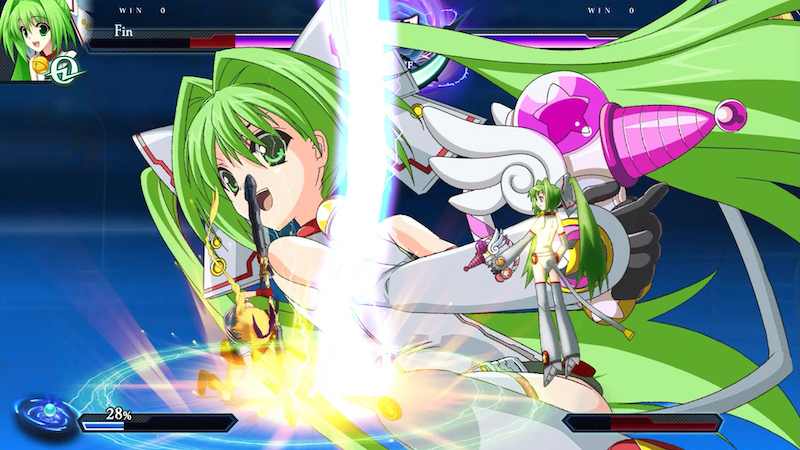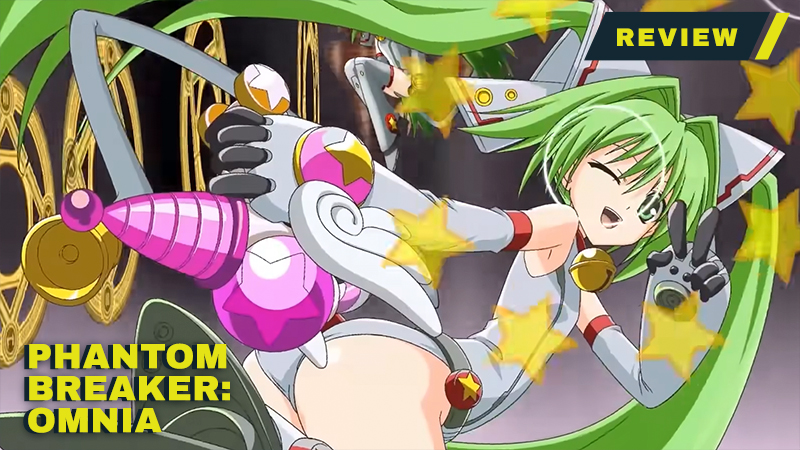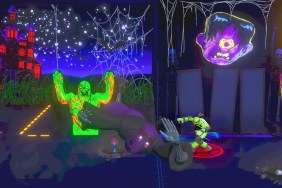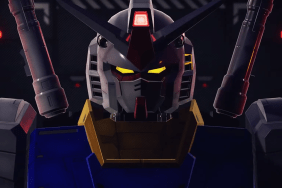There’s no better time to be a fighting game fan. With decades of great titles from the past and new iterations in established franchises that cater to hardcore and casual audiences, there is no shortage of options. Phantom Breaker: Omnia is the fourth main entry in Mages’ Phantom Breaker series (which is oddly more notable due to its beat ’em up spin-off Battle Grounds) and Melty Blood developer GameLoop has been enlisted to shore up the action. While technically sound, Omnia doesn’t stick out in a crowded genre or have much of a selling point for those not already invested in the series.
Phantom Breaker aims to be a spiritual successor to the Asuka 120% series, which is a personal favorite of mine, but it doesn’t quite get all the way there when it comes to recreating the magic of the Sega Saturn classic. There are some obvious tributes in place, such as the Clash system that allows attacks to cancel one another out while the screen zooms in to make the moment all the more dramatic. This works well as it amplifies the action and promotes aggressive play as the best defense can be a good offense. The 20-character, predominately female roster also has designs that are more generic anime fighting fare and isn’t as clearly defined as Asuka‘s school club theme that gave each and every character an instant personality and reliability.

The biggest difference between Phantom Breaker and the Asuka series is how the actual fighting is handled. While the 120% series was known for being approachable due to its use of universal inputs and non-complicated special moves, Phantom Breaker goes a couple of steps further when it comes to simplifying things. There’s no need to do dragon punch motions or trying to pull off a Shoryuken input as all special moves are done by just pressing the cross button on the PlayStation controller. Other special moves are triggered by adding in a direction with the button press, so it’s actually most like Super Smash Bros. than any traditional fighter.
Playing around with fighting game norms and turning mechanics on theirs isn’t inherently a bad thing, but being able to instantly pull off specials can easily make newer players fall into the trap of only using special moves and ignoring the other three attack buttons. There is a decent amount of strategy to figure out, and you will have to figure it out as the tutorials are non-playable manuals. Interestingly, the game is built around auto-combos with weak attacks giving the most hits, medium putting in a few, and then the strong attack being used as a good combo finisher. On top of that are other mechanics that use the meter you accumulate by doing damage, such as your special finishing move called a Phantom Break (done by hitting special and heavy attack), an ability to go into overdrive, and even the ability to escape out of a hit stun.
Each character also has three different styles that they can play in: Quick, Hard, and Omnia. Quick lessens your health but allows for the aforementioned auto combos, Hard is all about single-hit attacks that do more damage, while Omnia is a mixture of the two. There are also special overdrive abilities that are tied to each style, so there are a lot of reasons to experiment and find one you prefer. As detailed, there has been a lot of work to add complexity to a core that was designed to be very simple. It might seem contradictory, and it does sometimes clash together, but for the most part, it works in being an approachable fighting game that has enough depth to sink your teeth into.
Omnia has a pretty feature-rich selection of modes, too. There are score and time attack modes complete with leaderboards, a strange arcade mode that has players fighting the entire roster rather than just a series of opponents, and a story mode that leans on developer Mages’ visual novel roots. However, these stories aren’t nearly as compelling as Steins;Gate or anything else from the Science Adventure catalog, and the dialogue has the bad habit of going on for a bit too long after the point has already been made. Despite these complaints, it’s worth praising the localization as the voice acting is well done and both English and Japanese voices are available.
The multiplayer options are more disappointing as playing online is busted at the time of review. Frequent disconnections and glitches that caused multiple player rooms to be made by the same host made simply getting into a match more difficult than beating the boss character Infinity on the hardest difficulty. In fact, I even got booted out trying to make player rooms, let alone connecting to another player. Considering that local scenes for this type of fighter are unlikely to pop up, having solid online play was a must and that just isn’t the case here. Even if the online issues get fixed, the options are pretty bare-bones.
Online issues aside, Phantom Breaker: Omnia is a competently made fighting game that is decidedly weird. It’s difficult to say who it is for and publisher Rocket Panda Games might not know either, considering the above meme-filled trailer that was made to market it. While it has some shared DNA with the Asuka series, it doesn’t play like it beyond a few elements, and the characters largely fall on the generic side. The solo offerings are largely fine, although the story modes for each character are overly drawn-out considering the narrative isn’t as compelling as Mages’ excellent visual novels, but the online play is frustratingly bad. Nearly all praise comes with a caveat of some sort and it becomes clear that Omnia can’t match up with the genre’s best or even its own inspiration.
SCORE: 6/10
As ComingSoon’s review policy explains, a score of 6 equates to “Decent.” It fails to reach its full potential and is a run-of-the-mill experience










